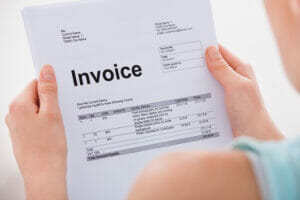
Most small businesses pour their hearts and souls into the work they do for clients. We understand their disappointment when the invoice has come due and the client still hasn’t paid. Silently checking the mail doesn’t help but pestering your client isn’t the best answer either. Here are some ideas to get your invoices paid more quickly.
Stick to a Schedule
Your clients will appreciate it if they know when to expect an invoice. Some businesses send out invoices weekly, some once or twice a month, and others do so when a project is complete. Whichever you feel is most appropriate for your business, choose it and stick with it. Clients should only receive one-off invoices on rare occasion.
Positive Reinforcement
Some clients work best with positive reinforcement. Giving even a small 1-2% discount for early payment may be all the incentive some clients need to get their payments to you quickly. Before going this route, make sure it is something you can afford and feel comfortable with. You want the client to pay you early, not leave you feeling cheated.
Negative Reinforcement
Other clients react more quickly when they are concerned about penalties. In the case of invoices, these negative reinforcers come in the form of late fees. This method sends a clear message that you find late payments unacceptable. Come up with a reasonable amount such as 1.5% or $15.00, whichever is greater and stick with it. Anything too large may cause clients to leave you for someone else with less stringent terms.
Convenience
In this day, nearly all of us are motivated by convenience. We suggest you offer your clients multiple ways to pay you. Accepting credit cards, doing bank transfers, taking payments through PayPal are all easy and convenient ways to get your clients to pay you much more quickly than dropping a check in the mail.
Require Deposits
One of my clients builds computers for their customers. Some of these machines cost thousands of dollars. To reduce the amount of credit they offer to their clients, orders over a certain amount require a 50% deposit.
Shorten Credit Terms
Do you have a customer who is habitually late? Perhaps you have a new customer and you may not feel comfortable offering net-30 terms to at the very beginning. There is nothing wrong with shortening your terms from net-30 to net-15. Some clients will respond well to this, much like they may respond well to late fees and penalties.
Follow Up
One to two weeks before a client’s invoice is due, reach out to them by phone or email. Make sure they have all the information necessary to pay their invoice. If they don’t, make it your priority to get it for them. We have found that some clients haven’t paid their bill because it may have been lost in the mail or, in the case of emailed invoices, it ended up in their junk mail box. Most clients want to pay you on time. But they can’t pay you if they never received the invoice in the first place.
Ask for Late Payments When You Call
When you do a follow-up phone call or email, ask them to contact you by phone with their credit card information. This allows you to take care of the invoice payment in a convenient way for the client and helps them avoid late penalties and fees.
Know When to Ask for Help
Successful accounts receivable management means you must know when to ask for help. You have the option of reporting late payments to credit bureaus, contacting a debt collection lawyer, or even looking into receivables factoring which could allow you to get your hands on cash fast while the factor goes after the late payment.
Do you need help managing your invoicing and accounts receivable? Give Sound Accounts a call today for a quote!

